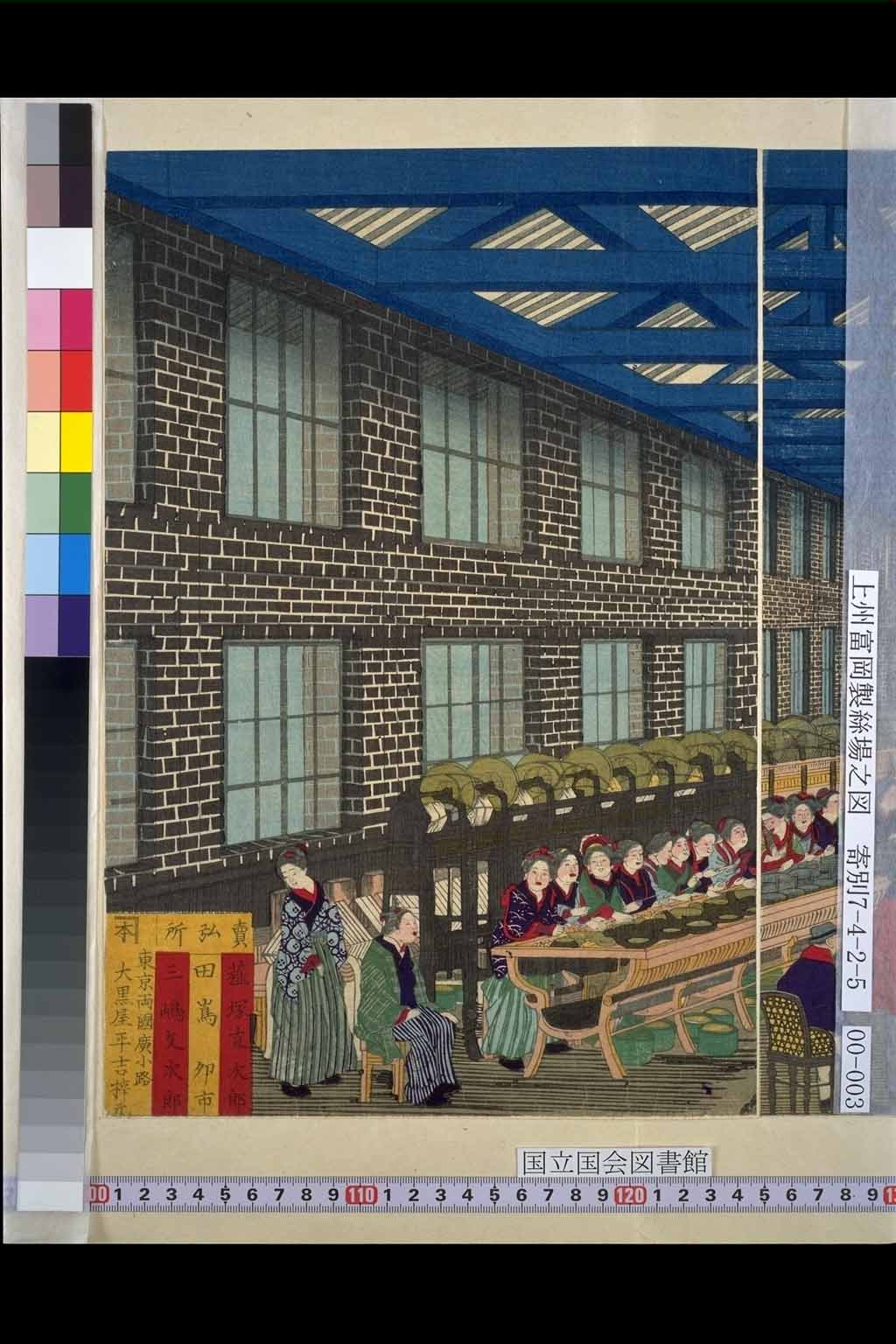By Rich Ufibro
The Meiji and Taishō periods marked points in time when Japan started to take in more influence from the West than ever before and began adopting new methods of production that began gaining traction abroad. Amongst these production methods that made their way to Japan was that of textile production. Much like the rise of textile industries that could be witnessed in other countries (such as the United States and several European countries) during the first and second industrial revolutions, the same could be witnessed in Japan during the Meiji and Taishō periods. Much like the aforementioned countries, textile production of this era began to be located at factories and mills, which made use of machine spinning technology that required human operation. The human labor that was employed to help facilitate this process was predominantly local women.[1] This exhibit will take a closer look at that population of female textile workers by investigating their working conditions in an attempt to get a more realistic perspective on how their daily lives were set up. It will further give insight as to how these women felt about their working conditions and how they chose to respond to these specific conditions through activism. It will finally raise questions about victimhood and bring up discussions about the agency of these female workers to give readers a more nuanced view on how to view female silk workers of these eras.
For the individual parts please click on the respective title:
A Look at the Population of Silk Workers
Textile Labor: As Seen Through the Eyes of the Laborers Themselves
Activism of Silk Mill Workers
Conclusion and References
[1] Liao, “Population, Resources and Female Labor in the Raw Silk Industry of Nagano in Meiji Japan,” p. 28.

